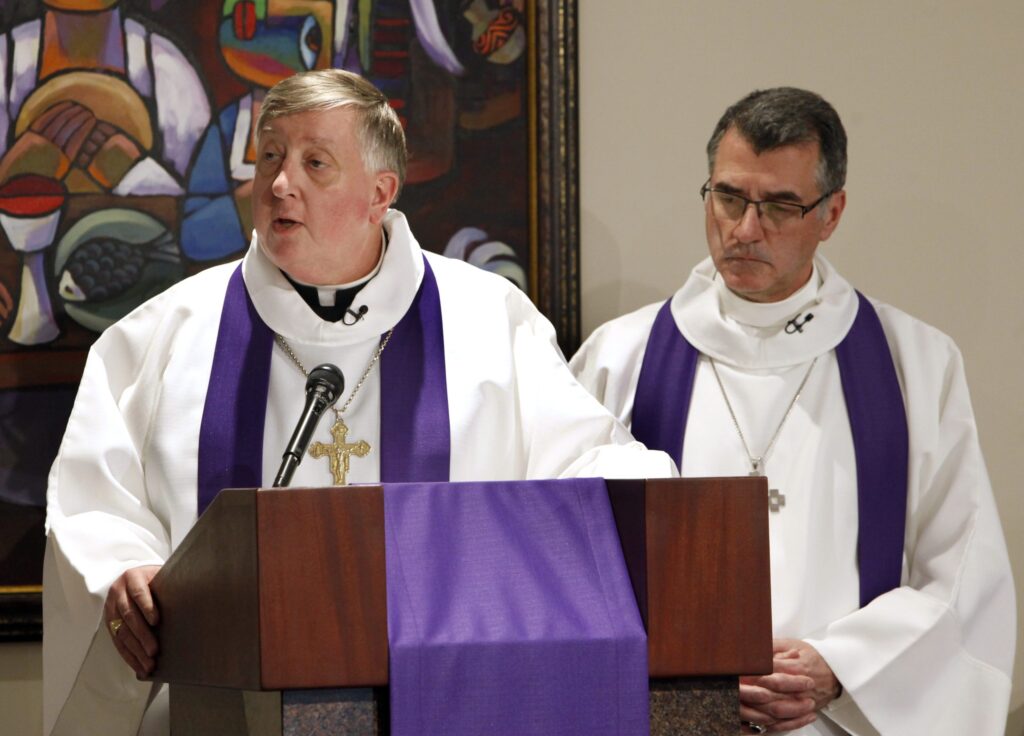NEW YORK – A new report on the history of slavery in the Archdiocese of St. Louis, Missouri, details how many people were enslaved by the archdiocese’s first three bishops, 11 parish priests and seven other clergy who served in the archdiocese during the 19th century.
The report identified the names of a total of 99 people who were enslaved by Catholic clergy in the archdiocese, including 44 who were enslaved by diocesan bishops and clergy, and the rest who were enslaved by religious order clergy.
But the report, “Slavery in the Historic Archdiocese of St. Louis,” notes that these figures are not conclusive and the identities of those enslaved have yet to be determined. At least 30 unidentified people who were enslaved by the diocese’s bishops and clergy remain, the report said.
Archbishop Mitchell Rozanski, in his foreword to the report, said he hoped the report would lead to healing.
“We release the findings of this report with a spirit of remorse so that we can begin the work of healing and continue our efforts to eradicate the sin of racism,” Rozanski said.
The 84-page report provides the biography and background of each bishop and clergyman, detailing their involvement with slavery, their views on slavery, and their experiences with slavery. The report also lists the names of the slaves held by bishops and clergymen and provides a history of each.
The first evidence of people being enslaved by Catholic clergy in St. Louis dates back to 1776, when Father Bernard de Rimpac was a missionary sent to St. Louis.
The three bishops who enslaved people while leading archdioceses were Bishop William Louis Valentine Dubourg, Bishop Joseph Rosati, and Archbishop Peter Richard Kenrick, who enslaved 19, 23, and 4 people, respectively.
Dubourgue led what were then the dioceses of Louisiana and Florida from 1815 to 1826, after which he returned to France and served as bishop until his death in 1833. Rosati succeeded Dubourgue in 1826 and became the first bishop of the Diocese of St. Louis a year later when it split into two. He continued to lead the diocese until his death in 1943.
Kenrick succeeded Rosati after his death and became the first archbishop of St. Louis when it became an archdiocese in 1847. He served in that position until 1895, dying a year later.
Even before St. Louis had a bishop, slavery was still common among Catholic clergy who conducted missionary work in the area. The report identifies missionary priests Father Pierre Gibaud and Father James Maxwell as enslaving at least nine people before Dubourg became bishop. It also identifies five other missionary priests who enslaved as many as 31 people in the years before St. Louis became a diocese.
The report, released June 22, is the latest in the archdiocese’s “Forgive Our Wrongs” project, launched in 2018 by then-Archbishop Robert Carlson to examine the archdiocese’s historical role in slavery. In 2020, Archbishop Mitchell Rozanski expanded the project, renaming it “Forgive Our Wrongs.”
Carlson started the project to help the archdiocese better understand the use of slave labor by its bishops and clergy, which Rozanski described as an effort to “uncover the contributions and untold stories of those enslaved by the local church.”
When Rozanski took over the project in 2020, he named it In the Spirit of Confession and Healing and set two additional goals: to “promote open and honest access to the historical record of slavery in the archdiocese” and to “foster community engagement and encourage dialogue.”
The report was compiled from thousands of documents from research institutions around the world and, according to Rozanski, reflects the full extent of that research and what is now known about the enslavement of people by diocesan clergy and bishops within the archdiocese’s historical boundaries.
But the investigation continues. The archdiocese will continue to examine its own files and update the report regularly as new findings are compiled, the report said. It will also continue to examine primary sources in a variety of institutions, including academic, diocesan, religious and private archives.
“The slaves identified in this report played a vital role in building local churches from small frontier missions into thriving archdioceses. Their efforts must be recognized and their stories told,” the report said.
“This work is not yet complete,” the report continues, “and there are unidentified slaves within the report that the Commission is working to identify, as well as slaves who have not yet been discovered in the study. They will be added to the report as the study progresses.”
Follow John Lavenburg on X: John Lovenburg


